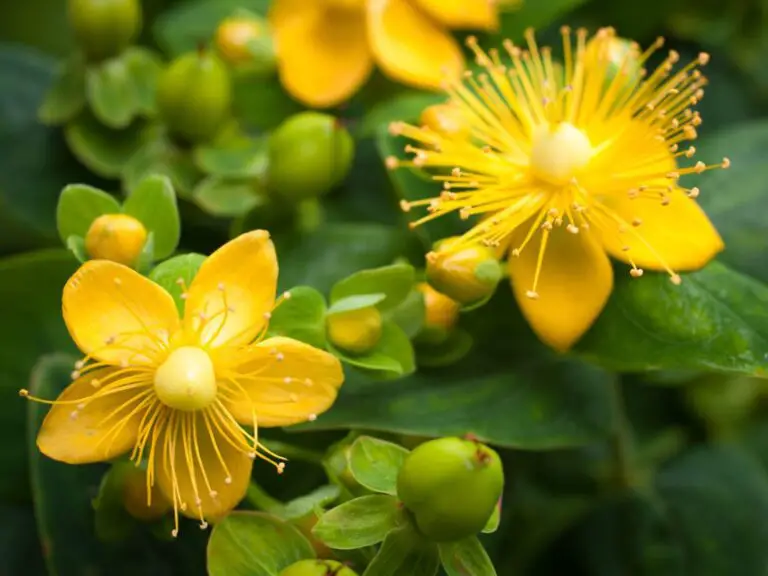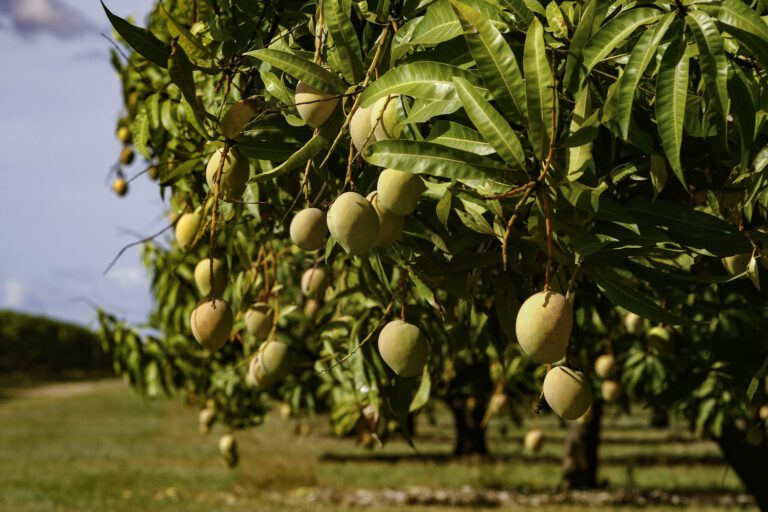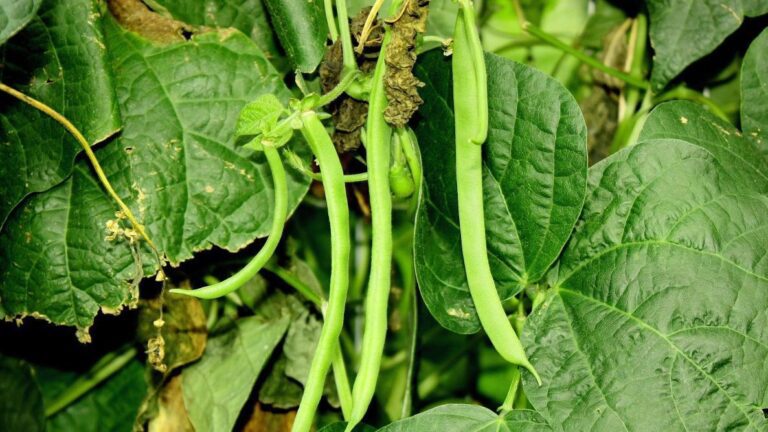11 Ways To Prevent Tomato Hornworms This Season
Table of Contents
Identifying Tomato Hornworms
Identifying Tomato Hornworms
Tomato hornworms are one of the most common pests that gardeners encounter when growing tomato plants. These large, green worms can wreak havoc on your tomato plants if left unchecked. Identifying these pests early on is crucial in order to prevent significant damage.
One of the first signs of a tomato hornworm infestation is the presence of chewed leaves, stems, or even entire branches on your tomato plants. These voracious eaters can quickly strip a plant of its foliage, leaving it weak and vulnerable. Additionally, you may notice droppings, known as frass, on the leaves and ground beneath the affected plants. These dark pellets often contain remnants of the plant material the hornworms have consumed.
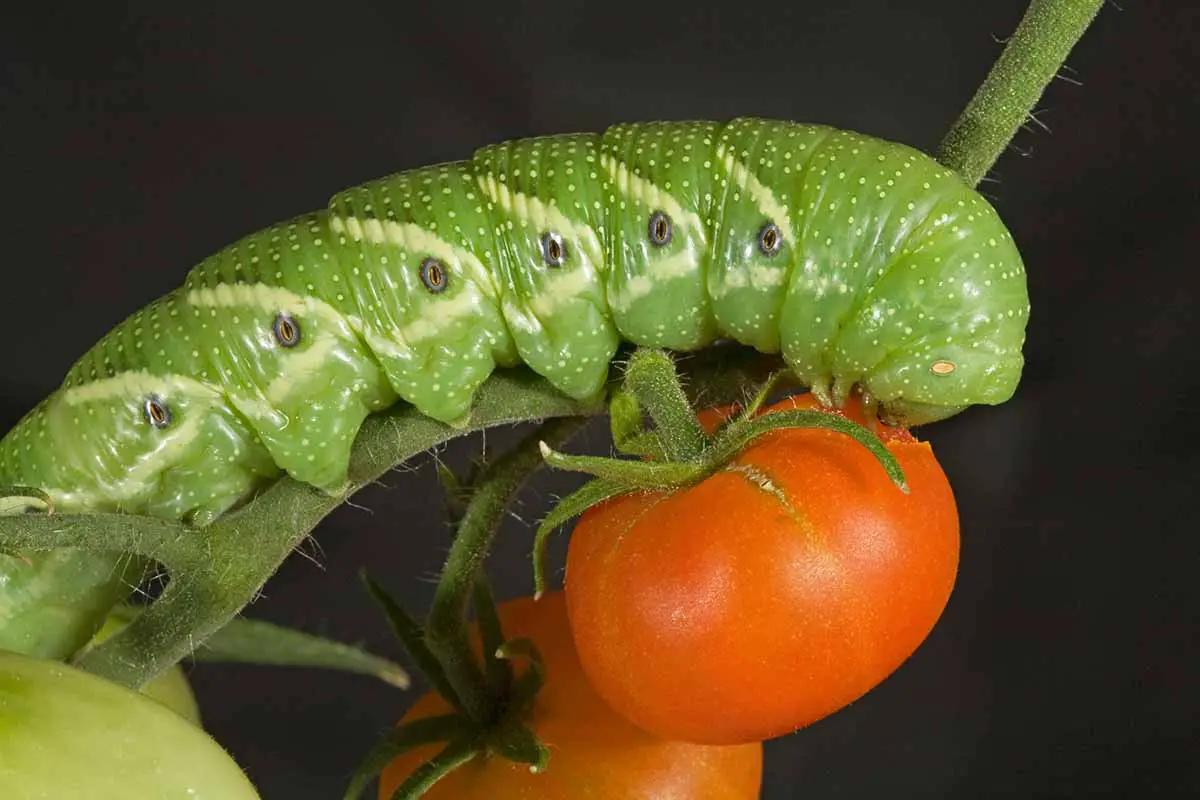
Understanding the Life Cycle of Tomato Hornworms
Tomato hornworms undergo a fascinating and intricate life cycle that spans several weeks. Understanding this cycle is crucial for effectively managing these pests in your garden. The life cycle of tomato hornworms can be broken down into four stages: egg, larva, pupa, and adult.
The first stage, the egg, is the starting point of the hornworm’s life. Female moths lay their eggs on the underside of tomato leaves, usually in clusters of 20 to 30. These eggs are nearly spherical and are initially a light green color, but they gradually turn yellowish before hatching. It takes about four to eight days for the eggs to hatch, and the emerging larvae are hungry and ready to devour tomato foliage.
Once hatched, the larvae enter the second stage of their life cycle as voracious feeders. These green caterpillars, also known as hornworms due to the horn-like protrusion on their posterior, can grow up to four inches in length. They have a distinctive appearance with bright green bodies and white diagonal stripes along their sides. During this stage, hornworms feed fervently on tomato leaves, causing significant damage if left unchecked. After approximately three to four weeks of feeding, larvae enter the next stage of their life cycle, the pupa stage.
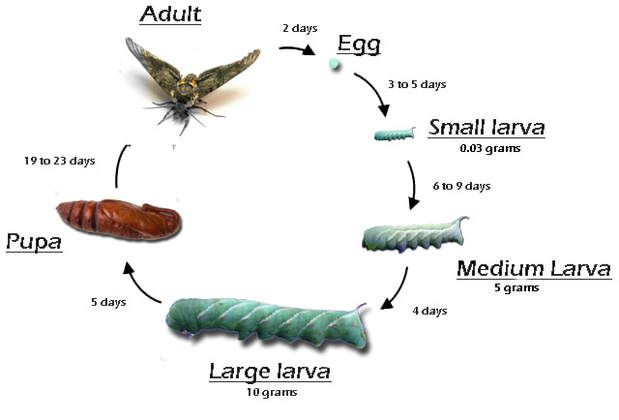
The Damage Tomato Hornworms Can Cause to Your Tomato Plants
Tomato hornworms can cause significant damage to your tomato plants if left unchecked. These voracious caterpillars have a strong appetite and can defoliate your plants in no time. They feed on the leaves, stems, and fruits of tomato plants, leaving behind skeletonized foliage and chewed fruits.
The damage caused by tomato hornworms goes beyond mere aesthetic concerns. When the leaves are stripped bare, the plants are unable to photosynthesize effectively, resulting in reduced growth and weaker overall plant health. Moreover, the loss of foliage deprives the plants of their ability to produce energy, leading to decreased fruit production and smaller harvests.
Not only do tomato hornworms eat the leaves and stems, but they also have a particular affinity for the fruits themselves. They can bore into the tomatoes, leaving unsightly holes and causing them to rot prematurely. This not only results in lower-quality produce but also opens the door for other pests and diseases to infest the damaged fruits.
In summary, the damage inflicted by tomato hornworms on your tomato plants can be devastating. From defoliation to reduced growth and diminished fruit production, these pests can wreak havoc on your garden. Therefore, it is crucial to take proactive measures to control and eliminate these caterpillars to safeguard the health and productivity of your tomato plants.
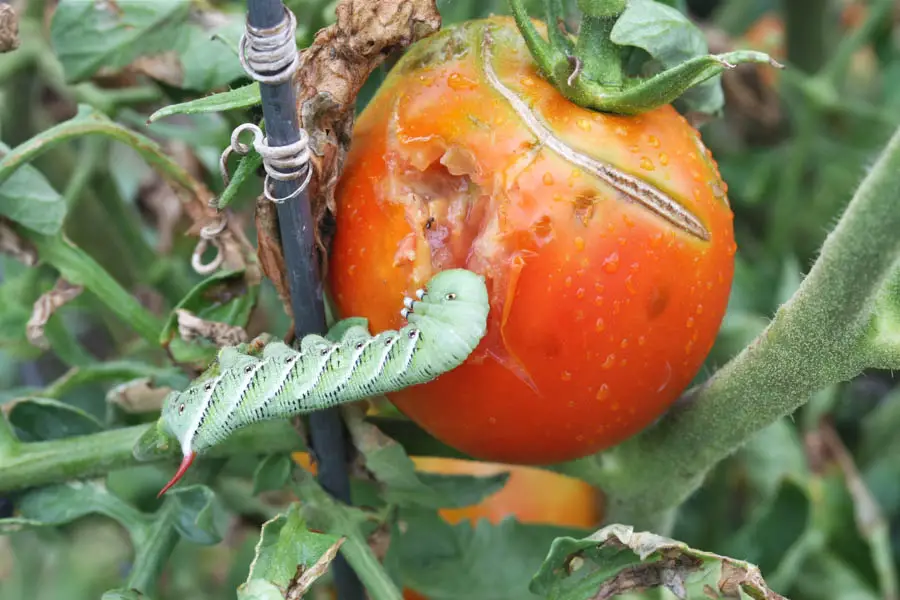
Creating a Healthy Garden Environment to Deter Tomato Hornworms
A healthy garden environment is essential when it comes to deterring tomato hornworms. One of the first steps you can take is to ensure that your garden beds are free from debris and weeds. Hornworms are attracted to dense foliage and unkempt areas, so regularly cleaning and maintaining your garden will go a long way in preventing infestations.
In addition to cleanliness, it is important to provide your tomato plants with the proper amount of sunlight and air circulation. Hornworms prefer shady, humid conditions, so pruning your plants to allow for better air flow and sunlight exposure will make your garden less inviting to these pests. Furthermore, consider spacing out your tomato plants to decrease the chances of infestations, as overcrowded plants can create an ideal hiding spot for hornworms.
By creating a healthy garden environment through regular maintenance and proper plant care, you are taking proactive measures to deter tomato hornworms. Stay tuned for more strategies to keep these pests at bay and protect your tomato plants from potential damage.
Implementing Proper Crop Rotation Techniques to Prevent Tomato Hornworm Infestations
Crop rotation is an essential technique for preventing tomato hornworm infestations and maintaining the health of your tomato plants. This practice involves the systematic shifting of crops within your garden space, which helps break the life cycle of these destructive pests. By rotating your tomato plants to different areas each year, you disrupt the hornworms’ ability to locate and feed on their preferred host plants.
Implementing proper crop rotation techniques offers several benefits in the fight against tomato hornworms. Firstly, it helps to prevent the buildup of hornworm populations in the soil by reducing their access to a continuous food source. Secondly, rotating crops helps to reduce the risk of diseases and nutrient imbalances, which can weaken the plants and make them more susceptible to hornworm attacks. Lastly, by introducing different plant families into the rotation, you can create a more diverse and balanced garden ecosystem, attracting beneficial insects that prey on hornworms and naturally control their population.
When implementing crop rotation strategies in your garden, it is essential to plan carefully and follow a systematic rotation schedule. Start by dividing your garden space into distinct sections or beds. Each year, move your tomato plants to a new section of the garden, ensuring that they are not planted in the same location for at least three years. Instead of tomatoes, consider planting crops from unrelated families, such as legumes, brassicas, or root vegetables, in the former tomato bed. This rotation technique disrupts the lifecycle of the hornworms, making it harder for them to locate and feast on your tomato plants. By diligently practicing crop rotation, you can significantly reduce the risk of tomato hornworm infestations while promoting the overall health and productivity of your garden.
Introducing Beneficial Insects as Natural Predators of Tomato Hornworms
Beneficial insects, such as the braconid wasp and the green lacewing, play a crucial role in controlling tomato hornworm populations in your garden. These natural predators are highly effective in reducing the number of hornworms, helping to maintain a healthy tomato crop.
The braconid wasp, for instance, lays its eggs inside the hornworm larvae. As the eggs hatch, the wasp larvae feed on the hornworm from the inside, eventually causing its death. Similarly, the green lacewing and its larvae voraciously consume hornworm eggs, larvae, and pupae. By introducing these beneficial insects into your garden, you create a natural balance that suppresses hornworm populations without resorting to chemical pesticides.
To attract these beneficial insects, you can provide them with a suitable habitat. Planting a diverse range of flowers, such as marigolds, daisies, and yarrow, will attract and support a population of beneficial insects in your garden. Additionally, you can minimize the use of broad-spectrum insecticides that can harm these beneficial insects, allowing them to thrive and maintain the natural ecosystem in your garden. So, consider harnessing the power of these natural predators by introducing them into your garden and creating a sustainable solution for managing tomato hornworm infestations.
Using Organic Pesticides to Safely Control Tomato Hornworm Populations
Using organic pesticides is a safe and effective method to control tomato hornworm populations in your garden. Organic pesticides are derived from natural sources such as plants, bacteria, and minerals, making them an environmentally friendly alternative to synthetic chemical pesticides.
One example of an organic pesticide that can be used to combat tomato hornworms is Bacillus thuringiensis (Bt). This naturally occurring soil bacterium produces proteins that are toxic to many insect pests, including tomato hornworms. When sprayed onto the tomato plants, Bt is ingested by the hornworm larvae, causing their stomachs to dissolve and ultimately leading to their death.
Organic pesticides provide an excellent option for gardeners who are concerned about the negative impact of synthetic chemicals on the environment and their own health. However, it is important to keep in mind that organic pesticides should still be used judiciously and in accordance with the manufacturer’s instructions. It is also important to note that while organic pesticides are generally considered safe for beneficial insects, it is always advisable to minimize their use to avoid unintended harm to beneficial pollinators and natural predators.
Certainly! Here’s a table outlining Organic Control Methods for Tomato Hornworms:
| Method | Description |
|---|---|
| 1. Handpicking | Regularly inspect your tomato plants for hornworms. Pluck them off by hand and drown them in soapy water. Hornworms cannot bite or sting, so bare hands are fine for this task. |
| 2. Bacillus thuringiensis (Bt) | Use Bt-based organic insecticides on young tomato hornworms (less than two inches long). Bt is derived from natural sources and specifically targets caterpillars. However, more mature caterpillars may survive this treatment. |
| 3. Homemade Solutions | Create a mash of marigold leaves and flowers, soak it in water for 24 hours, strain the solids, and add water plus a pinch of liquid castile soap. Spray this homemade bug spray on tomato plants to deter hornworms. |
| 4. Soap and Cayenne Pepper Spray | Mix dishwashing liquid and water, spray it onto the foliage, and sprinkle cayenne pepper over the wet leaves and fruits. The soap kills the worms, while the cayenne repels new invaders. |
Remember that organic methods minimize harm to beneficial insects and promote sustainable pest control!
Practicing Regular Inspection and Monitoring of Tomato Plants for Early Detection of Hornworm Infestations
Regular inspection and monitoring of tomato plants is crucial for early detection of hornworm infestations. By implementing this proactive approach, gardeners can identify and address potential issues before they escalate, thereby minimizing the damage caused by these voracious pests.
During the growing season, it is recommended to conduct a thorough visual inspection of tomato plants at least once a week. Begin by inspecting the foliage, focusing on the undersides of leaves, where hornworms tend to hide. Look for signs of chewed leaves, black droppings (known as frass), or the presence of small green caterpillars. It’s also essential to pay close attention to the stems and fruit, as hornworms may also feed on these plant parts. By identifying their presence early on, gardeners can swiftly intervene and implement appropriate control measures to prevent widespread infestations.
In addition to visual inspection, monitoring techniques such as using pheromone traps or sticky traps can be helpful in detecting and monitoring hornworm populations. These traps utilize synthetic hormones or adhesive surfaces to attract and capture adult moths or flying insects, providing a clear indication of the pest’s presence in the garden. By regularly checking these traps and recording the catch, gardeners can establish patterns to anticipate and manage hornworm outbreaks effectively.
By practicing regular inspection and monitoring of tomato plants, gardeners can stay aware of hornworm infestations in their garden. Early detection allows for immediate intervention and ensures that appropriate control measures can be implemented promptly, reducing the damage and preserving the health of tomato plants. Stay vigilant and proactive in your efforts to keep these destructive pests at bay.
Employing Handpicking Techniques to Physically Remove Tomato Hornworms from Plants
Handpicking techniques serve as a simple yet effective method for physically removing tomato hornworms from plants. The advantage of this approach is the immediate reduction of the pest population without the use of any chemicals or pesticides. By manually inspecting your tomato plants and removing the hornworms by hand, you can prevent further damage to your crops and promote a healthier garden environment.
To employ this technique, it is vital to frequently inspect your tomato plants, checking both the upper and lower surfaces of the leaves. Tomato hornworms are large green caterpillars with distinct white markings and can blend in with the foliage, making them sometimes difficult to spot. However, their voracious appetite often leads to small holes and missing sections of leaves, providing clues to their presence. By carefully examining the plants, you can detect and remove these pests before they cause extensive damage. It is advisable to wear gloves while handpicking to protect your hands and prevent any potential irritation from the hornworm’s spines or the presence of harmful bacteria. Dispose of the pests by drowning them in soapy water or sealing them in a plastic bag for disposal.
Implementing Companion Planting Strategies to Repel Tomato Hornworms
Companion planting refers to the practice of planting certain crops near each other to create symbiotic relationships and deter pests. When it comes to tomato hornworms, there are several companion planting strategies that can help repel these pesky insects. One effective approach is to plant marigolds alongside your tomato plants. Marigolds emit a strong scent that acts as a natural deterrent for many insects, including tomato hornworms. Additionally, marigolds attract beneficial insects like ladybugs and lacewings, which are natural predators of the hornworms. By incorporating marigolds into your garden, you not only add a splash of vibrant color but also create a natural defense against tomato hornworm infestations.
Another companion plant that can help repel tomato hornworms is basil. The strong aroma of basil plants can confuse and deter hornworms, preventing them from finding and attacking your precious tomatoes. In addition, basil has been shown to enhance the flavor of tomatoes when planted nearby. This beneficial partnership not only protects your plants but also enhances the overall taste and quality of your harvest. So, consider planting basil alongside your tomatoes to create a mutually beneficial relationship and keep those pesky hornworms at bay.
Certainly! Here’s a table outlining Companion Planting Strategies to Repel Tomato Hornworms:
| Companion Plant | Description |
|---|---|
| 1. Basil | Basil plants are excellent companions for tomatoes due to their similar growth requirements. Not only do they enhance the flavor of tomatoes, but their strong scent also repels tomato hornworms, aphids, spider mites, and thrips. Ensure basil receives full sunlight (6-8 hours a day) and well-draining soil with a pH of 6.0 to 7.5. |
| 2. Zinnias | These gorgeous annual flowers thrive alongside tomatoes. Their picturesque blooms emit a scent that deters tomato hornworms and cucumber beetles. Zinnias also attract beneficial predatory bugs and pollinators like bees, butterflies, and hummingbirds. |
| 3. Marigolds | Marigold plants are another effective companion. They produce a chemical that repels tomato hornworms and other garden pests. Marigolds add visual interest, prevent pests, and have similar soil and care requirements as tomatoes. |
| 4. Chamomile | Chamomile not only repels hornworms but also attracts beneficial insects. It’s a calming addition to your garden and can be planted near tomatoes for protection. |
| 5. Borage | Borage is a versatile companion. It repels hornworms, attracts pollinators, and enriches the soil with nutrients. Its blue flowers add beauty to your garden while keeping pests at bay. |
By implementing these companion planting strategies, you can effectively protect your tomato plants from those pesky hornworms!
Understanding the Importance of Pruning and Proper Plant Maintenance to Prevent Hornworm Infestations
Pruning and proper plant maintenance play a crucial role in preventing hornworm infestations in your tomato plants. By implementing these practices, you can significantly reduce the risk of your plants being attacked by these destructive pests.
One important aspect of pruning is removing any affected or damaged foliage regularly. Tomato hornworms are attracted to plants with dense foliage, which provides them with a hiding place and easy access to your precious tomatoes. By removing the damaged leaves, you not only eliminate the potential feeding grounds for the pests but also improve air circulation within the plant, reducing the risk of fungal infections.
In addition to removing damaged leaves, it is also essential to regularly prune the suckers that develop at the leaf axils. These suckers not only contribute to bushier plants but also attract hornworms due to their tender nature. By removing these suckers, you limit the hiding spots and preferred feeding areas for the hornworms, making your plants less appealing to them.
Utilizing Floating Row Covers as a Physical Barrier to Protect Tomato Plants
Floating row covers offer an effective physical barrier to protect tomato plants from the damaging effects of tomato hornworms. These covers are made from lightweight and translucent materials, allowing sunlight, air, and water to reach the plants while providing a barrier against pests. By deploying floating row covers, gardeners can prevent tomato hornworms from accessing the plants, significantly reducing the risk of infestation.
One of the key advantages of utilizing floating row covers is their simplicity and ease of use. These covers are lightweight, making them easy to install and remove as needed. By firmly securing the edges of the covers to the ground using stakes or weights, gardeners can ensure that no gaps are left for pests to enter. Moreover, floating row covers can be adjusted to accommodate the growth of the plants, providing protection throughout the growing season. This not only shields the tomato plants from tomato hornworms but also acts as a barrier against other pests like aphids and flea beetles. With their affordability and versatility, floating row covers are an invaluable tool in safeguarding tomato plants and promoting healthy growth.
• Floating row covers are made from lightweight and translucent materials
• They allow sunlight, air, and water to reach the plants while protecting against pests
• The covers prevent tomato hornworms from accessing the plants, reducing infestation risk
• Floating row covers are easy to install and remove as needed due to their lightweight nature
• By securing the edges of the covers firmly to the ground, no gaps are left for pests to enter
• These covers can be adjusted to accommodate plant growth throughout the growing season
• Floating row covers act as a barrier against other pests like aphids and flea beetles
• They are affordable and versatile tools in safeguarding tomato plants’ health.
Creating Homemade Remedies and Sprays to Repel Tomato Hornworms
Creating homemade remedies and sprays to repel tomato hornworms can be an effective and natural way to protect your tomato plants from these destructive pests. While professional pesticides are available, many gardeners prefer to use homemade solutions that are safe for the environment and pose no harm to beneficial insects.
One popular homemade remedy for tomato hornworms is a mixture of dish soap and water. To make this spray, simply mix a few drops of dish soap with water in a spray bottle and generously spray it on the leaves of your tomato plants. The soap acts as a natural insecticide, suffocating the hornworms and discouraging them from feeding on your plants. It’s important to note that this spray should be applied directly to the hornworms for maximum effectiveness. Additionally, it’s best to spray during the early morning or late evening when the hornworms are most active.

Understanding the Role of Proper Watering and Fertilization in Preventing Tomato Hornworm Infestations
Proper watering and fertilization play a crucial role in preventing tomato hornworm infestations and maintaining the health of your plants. When it comes to water, it is essential to strike a balance between providing enough moisture for optimal growth and preventing excessive dampness that can attract pests like tomato hornworms.
To begin with, it is important to understand the watering needs of tomato plants. These plants require consistent moisture, but overwatering can lead to stagnant conditions that are favorable for the development of hornworms. You should aim to keep the soil consistently moist, but not waterlogged. Regularly check the soil moisture levels by inserting your finger into the soil up to the first knuckle. If it feels dry at that depth, it’s time to water. Using a drip irrigation system or soaker hoses can help deliver water directly to the roots while minimizing moisture on the leaves, which can attract pests.
In addition to proper watering techniques, fertilization is another key factor in preventing tomato hornworm infestations. A well-nourished plant is better equipped to resist and recover from pest attacks. Before planting, it is advisable to prepare the soil with organic matter, such as compost, to provide essential nutrients. During the growing season, regular application of a balanced fertilizer specifically formulated for tomatoes can enhance plant health and vigor. Be sure to follow the recommended dosage and frequency provided on the fertilizer packaging to avoid overfeeding, as excessive nitrogen can make plants more susceptible to pest problems.
By maintaining the right balance of moisture and nutrients, you can create an environment that discourages tomato hornworms from infesting your tomato plants. However, it is important to remember that these measures alone may not completely eliminate the risk of infestation. A comprehensive approach that combines various preventive strategies will yield the best results in protecting your tomato crop.
Implementing Crop Diversity to Discourage Tomato Hornworms from Establishing in Your Garden
Crop diversity plays a crucial role in deterring the establishment of tomato hornworms in your garden. By incorporating a variety of plants in your garden, you can create an unfavorable environment for these pests and reduce the risk of infestation. Implementing crop diversity not only disrupts the hornworm’s life cycle but also minimizes their ability to locate and target specific host plants.
One effective strategy is to interplant tomatoes with plants from different families. For instance, consider including herbs like basil, marigold flowers, or even plants from the brassica family such as broccoli or cabbage. The scent and physical characteristics of these companion plants act as natural repellents, making it difficult for tomato hornworms to locate and feed on your tomato plants. Moreover, diverse plant species encourage a more balanced ecosystem, attracting beneficial insects that can prey on and control hornworm populations.
Seeking Professional Advice and Consultation for Severe Tomato
Seeking professional advice and consultation is crucial when dealing with severe tomato hornworm infestations. While there are various techniques and methods that you can try on your own, sometimes the expertise and experience of a professional can make all the difference in effectively managing and eradicating these pests.
A professional consultant in the field of horticulture or pest control will have a deep understanding of the biology and behavior of tomato hornworms. With their knowledge, they can provide accurate assessments of the infestation severity and offer specialized recommendations tailored to your specific garden or farming environment. They can identify potential underlying factors that may be contributing to the infestation and suggest targeted solutions to address them. Engaging with a professional not only saves you time and effort but also helps ensure that the most appropriate and effective methods are implemented to restore the health and productivity of your tomato plants.
Remember, seeking professional advice should not be seen as a sign of failure or incompetence but rather as a proactive step towards a successful resolution. By bringing in a qualified expert, you are demonstrating your dedication to the well-being of your plants and your commitment to finding the most effective solutions. So, don’t hesitate to reach out to professionals in the field who can provide the expertise and consultation needed to tackle severe tomato hornworm infestations head-on.
For more information watch the below video.
What are some signs that my tomato plants may be infested with tomato hornworms?
Look for chewed or missing leaves, black droppings (frass) on the leaves, and green caterpillars with white stripes on their bodies.
Are tomato hornworms harmful to other plants besides tomatoes?
Tomato hornworms primarily feed on plants from the Solanaceae family, which includes tomatoes, peppers, and eggplants. They may also occasionally feed on other plants in the same family, such as potatoes.
How can I attract beneficial insects to my garden to naturally control tomato hornworms?
Planting flowers such as marigolds, dill, and fennel can help attract beneficial insects like parasitic wasps and ladybugs, which are natural predators of tomato hornworms.
Is it safe to use organic pesticides to control tomato hornworm populations?
Yes, organic pesticides derived from natural sources, such as neem oil or Bacillus thuringiensis (Bt), can be used to safely control tomato hornworm populations without harming beneficial insects or the environment.
How frequently should I inspect my tomato plants for early detection of hornworm infestations?
It is recommended to inspect your tomato plants at least once a week during the growing season to catch any hornworm infestations early and prevent severe damage.
How can I physically remove tomato hornworms from my plants?
You can pick them off by hand wearing gloves or use a pair of tweezers. Be sure to dispose of them properly, such as by dropping them into a bucket of soapy water.
Can companion planting really help repel tomato hornworms?
Yes, planting herbs like basil, mint, or dill near your tomato plants can help repel tomato hornworms due to their strong scent.
What is the best way to protect my tomato plants from tomato hornworms using floating row covers?
To protect your tomato plants, cover them with floating row covers made of lightweight fabric, securing the edges to prevent hornworms from reaching the plants.
How can I create homemade remedies to repel tomato hornworms?
You can make natural sprays using ingredients like garlic, chili peppers, or soap mixed with water. These solutions can be sprayed directly on the plants to deter tomato hornworms.
Can proper watering and fertilization prevent tomato hornworm infestations?
Yes, maintaining consistent watering and avoiding excessive nitrogen fertilization can help prevent tomato hornworm infestations, as over-fertilization can attract these pests.
When should I consider seeking professional advice and consultation for severe tomato hornworm infestations?
If your tomato plants are severely infested with tomato hornworms and the infestation is difficult to control using common methods, it may be necessary to seek professional advice from a horticulturist or pest control specialist.

Nicole Burke is a dynamic writer at SouthElMonteHydroponics, fueled by her passion for horticulture and environmental sustainability. Armed with a degree in Environmental Science from a renowned institution, Nicole’s expertise lies in hydroponic gardening, organic farming, and biodiversity conservation. Her insatiable curiosity and love for nature drive her to explore innovative techniques in hydroponics, seeking to revolutionize the way we grow crops in urban environments. Nicole’s writing reflects her deep commitment to promoting eco-conscious practices and fostering a deeper connection between humans and the natural world. Through her engaging storytelling, she inspires others to embrace sustainable living and harness the power of hydroponics for a greener future.

